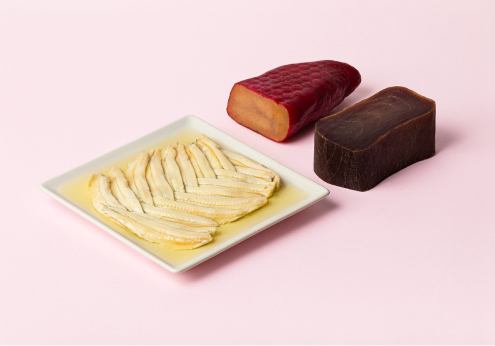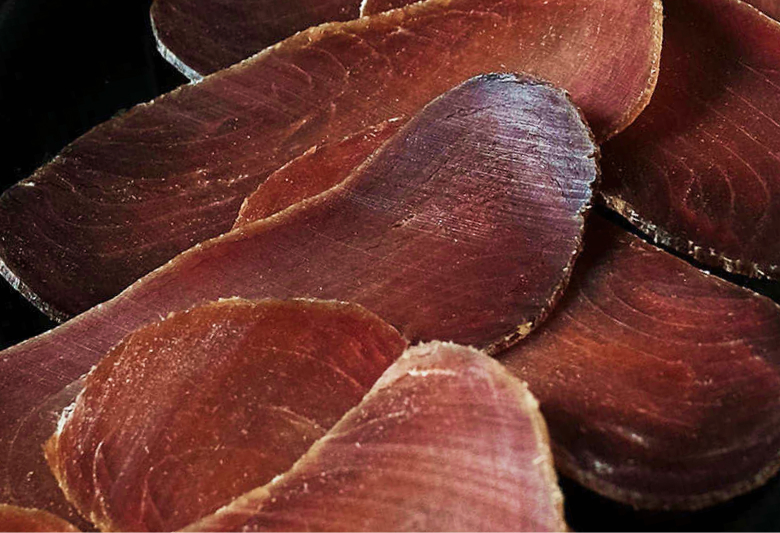Premium quality
since ancient times
If there’s one thing that distinguishes the salting and canning industry in Cádiz – it’s the high quality of the raw material and its traditional character. Since Phoenician and, later, Roman times, salted fish has been produced in the enclaves along the coast of Cádiz. As time passed, the tradition of making salted fish from the tasty fish of this generous coastline, especially from the tuna family, has been maintained. The differentiated quality of these products makes them highly valued. A delicacy within your reach!
The salted and canned fish industry in the southern part of Andalusia is currently made up of a small number of companies that are strongly committed to good work, tradition and artisanal production. The result is a range of qualitatively exceptional products, very different from what is offered by the international canning sector.
The passage of bluefin tuna and some other types through the waters of the Strait of Gibraltar on their migration from the Atlantic Ocean to the Mediterranean Sea has led to the development of the fishing and processing industries on the Cádiz coast from ancient times to the present day.

There are references to the Phoenicians trading in salted fish from the 7th century BC. Salted fish from the Gulf of Cádiz reached a high level of development during the Roman civilisation, when factories prospered along the coastline of this area of southern Spain, the ruins of which are still visible, such as those at Baelo Claudia (Bolonia). Garum from Cádiz, an essential condiment in Roman times, was famous in Rome.
PGI MOJAMA DE BARBATE
The evocation of this past appears when tasting the delicious salted fish from Cádiz, among which the following products stand out:
- Mojama, the most famous salted fish made with both almadraba tuna loins and yellowfin tuna. Protected by the PGI (Protected Geographical Indication) Mojama de Barbate
- Huevas, based on the so-called huevas de grano, is one of the most highly appreciated and most traditional types of salted fish.
- Atún de ijar, corresponds to the salting of the ijar, so called tuna’s belly or ventresca, a very juicy piece mixed with the fat of the fish.
- Sarda, exquisite salted tuna species Albacore (Euthynnus alletteratus).
An intense taste of the sea, of salted fish, a primitive and authentic flavour, very versatile in its culinary applications. Nowadays, the salting industries often combine this activity with fish smoking, whose products are also part of their range.
In the same way, canned food from Cádiz remains faithful to its traditional production methods. The fish that are the usual raw materials are frigate tuna, mackerel, almadraba tuna, yellowfin tuna, sardines and octopus. Other seafood specialities, common in the Campo de Gibraltar, are langoustines and fine shells, which are also used to make tasty preserves.
The canned mackerel and frigate tuna from the area are protected by the PGI Caballa y Melva de Andalucía, which protects the quality and identity of these products. Among the canned frigate tuna, melva canutera (the smallest one) stands out – it’s got whiter meat and a smooth, exquisite taste.
Although the most common presentation of these preserves is usually in oil, in the case of tuna, other recipes are also used, such as tuna in lard, tuna with onions or stuffed tuna.
The production process follows a series of stages that are usually labour-intensive, usually by women. Fish pealing is done entirely by hand, without any chemicals, which allows the fish to retain its natural characteristics.
A wide variety of parts are obtained from the cutting of the almadraba tuna, known as ronqueo (see page Almadraba Tuna), which are used to make highly appreciated preserves. The quality of the bluefin tuna (Thunnus thynnus), its raw material, is a clearly differentiating factor. Among the parts of the tuna that are used for canning are morrillo, tarantelo, lomo, tronco and hueva, which are more expensive but of exceptional quality!

